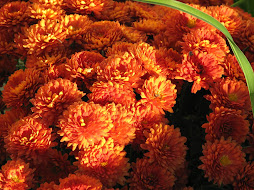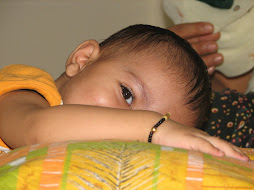ET Prodigy is doing a great service for all of us young ordinary Indians by letting us participate in such events. Competitions like this are common norms outside India but I must congratulate ET for democraticisng this big event for us. The case study may look simple in first glance but as you dig deeper you will find that its very challenging one and you really have to thibnk out of box if you want to give proper solution. I tried my best and waiting for the restults to be announced. I know there will be lots of people with good ideas but with my limited knowledge I could come up with mine. So I am just having my fingers crossed.. Here is the case study..
Case Brief:
Arvind Apte is employed at an Infrastructure consulting firm in a senior position. He has been involved in multiple projects with International financial and labour organizations; focused towards creating more inclusive and sustainable growth in India. Apte has identified the potential for a viable business model catering to this space, and understands the need to contribute directly towards these initiatives. Apte has hence decided to resign from his present job and start an organization that will create social impact. Today at his farewell dinner, his colleagues kept probing him about his new enterprise. As he was driving back, Apte felt that he had not given enough thought to his new organization’s business model, in particular, thinking through ways and means to ensure self sustainability of the enterprise while realizing the mission and social goals.
The question was still lingering in his mind as he parked the car in his garage. What
should be the focus of his organization? Should it be
‘To develop underprivileged job seekers into job creators’ or ‘To support capability building and scaling of existing ventures managed by underprivileged individuals/ communities’ The chosen statement would set the course for Apte’s planning and implementation in his home state of Maharashtra over the next 3 years.
If Apte chooses the first statement, ‘To develop underprivileged job seekers into job creators’, the organization would be called Cascade World. Cascade World will work towards identifying young entrepreneurs who are between 21-35 years of age from under-privileged backgrounds (household income < Rs.5000 per month). Cascade World would reach out to the underprivileged communities through its employees and volunteers. The organization would also identify counselors, who will guide the young individual entrepreneurs throughout the project’s lifecycle. The counselors would be individuals with established business operations or salaried persons working at a corporate in Maharashtra. Once entrepreneurs are identified, they would be coached by Cascade World employees and volunteer counselors. Business plans would be developed and Cascade World may decide to provide the seed capital ranging from 1 lakh to 5 lakhs. Apte believes the opportunity for Cascade World lies in bringing together the underprivileged youth, the counselors and the financing institutions. There are several enabling factors 1. The number of underprivileged youth in Maharashtra is high 2. Corporate Social Responsibility has become a buzz world in the Corporate world and counselors would be available easily If Apte chooses the second statement, ‘To support capability building and scaling of existing ventures managed by underprivileged individuals/ communities’ the organization would be called Sustain World. Sustain World will work towards providing individuals, institutions, with strategies and skills through which they will be able to strengthen and/ or scale up their livelihood strategies. Sustain World would reach out to underprivileged individuals and communities through its employees and volunteers. Once the group/ individuals are selected, Sustain World would provide inputs and advisory relating to areas such as skill building, planning, tactical execution plans, improved understanding of business that would help enhance their revenue earning potential. As he went to bed, Apte was grappling with similar challenges for Cascade World and Sustain World.
1. What would it take for the model to become self sustaining and emerge as a viable proposition?
2. What process would Cascade World apply to identify individual entrepreneurs? Alternatively how would Sustain World identify individuals / communities to provide advisory services?
3. How many people can Cascade World or Sustain World impact in the first three years? How can the model be made scaleable?Here’s how YOU can help.
Instructions for submitting your response:
All entries are required to be structured in the following format. Entries that do not fulfill the criteria given above will be rejected.
• Page 1: Mention personal details, stream of participation, education and experience.
• Page 2: Summary of your model. You may choose either of the business models mentioned in the case. The summary should describe the salient features of your model and the reasons behind your choice of model (in 250-300 words.
• For your chosen model, please provide answers to Questions 1, 2 and 3 (in 350-400 words each) with each answer on a separate page, and in the sequence as provided in the case brief.
Evaluation Criteria:
All entries would be evaluated basis the following criteria:
• Feasibility and Sustainability
• Originality and Novelty
• Target Market Identification
• Scalability
My Solution For Case Study:-Summary and Reason for Selected Model from Case Study -Mr. Apte, in my view, the objective of the case study is to have more inclusive and sustainable growth in Maharashtra by positively impacting lives of underprivileged population through self sustainable economic model and later implementing its success throughout India. My observation says that both proposed models are not mutually exclusive and main differences between them are; their potential of being self sustainable and scalable after some time, age limit of targeted individuals and amount of positive change in first 3 years. I too believe that we have to be the pivot of change that we want to see and feel honored to be your adviser for such a noble cause.
Keeping objective and time frame in mind, I would like you to choose Sustain World (SW) model as practicality says, we can expect milk sooner from a young cow than a new born calf. Selected candidates for SW will already have some experience in business activities so raising their capabilities would be comparatively easy and the time and effort in “first few steps” that are going to be used for identifying candidates and their businesses for Cascade World (CW), will be less for SW.
I would like to implement SW model primarily on the lines of cooperative units such as Amul and also look into diversification of existing product profile for selected individuals / communities or starting a new venture if existing doesn’t look promising enough.
I think that an ideal solution for achieving ultimate objective would be using strengths of both models together but you haven’t given me that liberty for “first 3 years.” so later the experience gained by SW can be utilized for starting CW like subsidiary. This combined entity will create a bigger positive impact.
I hope that you would be satisfied with my analysis of the matter.
Mr. Apte, in next three pages I will try to provide solutions for doubts that you have in mind regarding Sustain World model as per best of my abilities.
1. What would it take for the model to become self sustaining and emerge as a viable proposition?Mr. Apte, as I understand from your profile, you have many contacts with international financial and labor organizations. CSR too has become a buzzword for lots of big organizations, who would be happy to send their experts for any worthy initiative and there are various government schemes, charitable foundations and NGOs which can be source of our initial funding. We can have lots of volunteers from students of business schools. We should work upon creating a self sustaining model that not only provides employment but also takes care of local ecological system, health, social and security issues of people belonging to SW initiative.
To make this model self sustaining and viable proposition we have to search for innovative and creating individuals / communities and their skill sets, reducing fixed costs of ventures, suggesting methods for improving production process and quality of goods, adding new products as per skills and market requirements, marketing their goods to new markets and creating new customers / retaining existing ones. There are various ways through which we can do that, few of them would be
1) We should have very few permanent employees whose salary will be generated from revenue sharing on sells through SW outlets in major cities. Most of the workforce should be made from motivated volunteers.
2) I am really impressed with the way Amul (GCMMF) cooperative, Shri Mahila Grah Udyog and Grameen Bank model works. So we should keep in mind such cooperative based models or self help group models for production of goods while giving consultancy services.
3) We should try to create new customers. One example would be tying up with hotels, retail malls or airlines for selling low price goods such as clay items and handicrafts. These restaurants and malls will add cost of these items to the bills exceeding certain amount. I think that those who are spending thousand rupees on cloths or food won’t mind spending some 15-20 Rs extra for a noble cause. Another way would be marketing these goods through religious organizations or convincing big companies to give these items as office gifts.
4) For customers who are not close to SW outlets, SW can reach them by creating a website for marketing and selling its goods.
There can be many ideas like above and I would discuss them in detail once we meet.
2. How would Sustain World identify individuals / communities to provide advisory services?
Mr. Apte, in my view identifying individuals / communities is the most important step for success of SW. For doing this we should focus on a single district first and start survey through our volunteers who will use population data from NGOs or government departments. We should modify this data for our use by considering few factors. Such as;
1) Classifying these individuals and communities on the basis of type of area they live in like urban, semi urban, rural or tribal and having some shops / ventures, then combining it with household income less than 10,000 Rs. per month for urban area, 7000 Rs for semi urban area and 3000 Rs for rural area. It would be beneficial as some government schemes as Swarnajayanti Gram Swarozgar Yojana, give loans only to rural population.
2) In India work generally passes from one generation to another, so we can identify communities on basis of traditionally backwardness such as cobblers, pottery makers, artisans, milkman, carpenters or blacksmiths keeping in mind income criteria in point 1 and their present work profile. This would be beneficial as their expertise will come handy for starting cooperative units of their respective fields.
3) Farmers and nomads (cattle herds, shepherds) with annual income less than 40,000 Rs. can be identified for SW initiative.
4) We can have education as one criterion. Individuals with education till 10th - 12th standard and household income less than 3000 Rs from rural or semi urban area hold lots of potential. With communication barriers coming down, we can advice and train them to switch career in some different field such as owing / managing rural BPOs.
Once we have made our list than we should reorganize it on the basis of their residing area, skills, traditional backwardness and education.
For identified communities the idea to move forward would be to create a cooperative unit of artisans or pottery makers so that they can market their products effectively. These units will act in synergy with each other. We would prefer that under one cooperative group we have members belonging to same area but they can be from different places too and for preventing communication gap between them we will provide them with affordable mobile phones.
For identified individuals we can groom them with lots of professional advice, equipments and finding new consumers to make their business a bigger success.
3. How many people can Sustain World impact in the first three years? How can the model be made scaleable?Lao Tzu said "Give a Man a Fish, Feed him for a day. Teach a Man to Fish, Feed him for a lifetime." Over a period of time, the impact of SW model in providing inclusive growth can be tremendous because it too involves teaching people “how to fish.” Since for data collection I would like you to select a district which is close to some big cities like Mumbai or Pune so Ahmednagar or Raigadh would be best fit. If head or main lady or primary earning member of the household is positively affected then whole family will also be affected in similar way. If we keep average size of the family members as 6 then for first 3 years, my estimate says that we can affect at least 3,000 to 5,000 people and considering many of them would have families; their actual number may stand at 17,000 to 28,000. You might know that in start Shri Mahila Grah Udyog was having only 7 members but as of now it has around 42,000.
Scalability is one of the embedded characteristics of my plan for Sustain World model. Once we get success in our first chosen district, we can start including people from near by districts, keeping in mind their skill set, in any existing venture that we already supporting under SW. We would be constantly updating our database with new ventures as every district / state of India has their own unique flavor like North Eastern India is very strong in making bamboo artifacts or Tamilnadu has expertise in making sculptures from stones and metals. A great example of scalability for cooperative approach is success of so many milk cooperatives based on Amul model. I know the product of milk producing cooperatives is daily consuming item so we can also plan to diversify current product profile of ventures to include these types of items.
In the nut shell through this model we have a wonderful opportunity through which we can change millions of lives in coming years. I believe that your past experience will come handy in this regard. We all individually can’t be like sun which removes all darkness but we all can become small lamps which can remove darkness from a specified area and you know what Mr. Apte, if we can make all lamps work together then we might have our best chance to outshine the sun too. I once again thank you for this wonderful opportunity and looking forward to hear from you.
Thanks
Hemant Dubey



